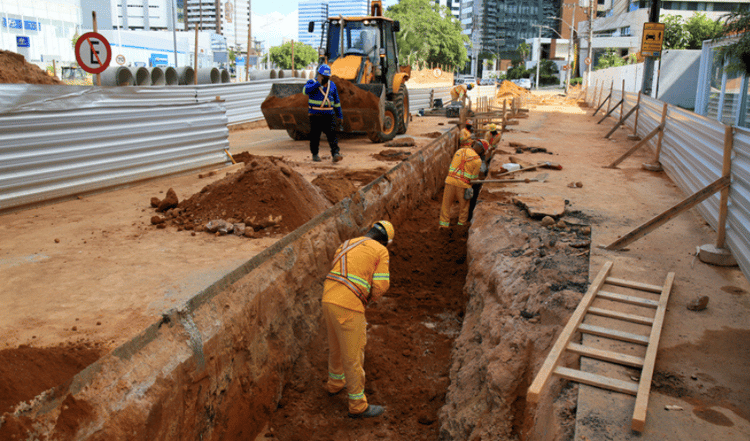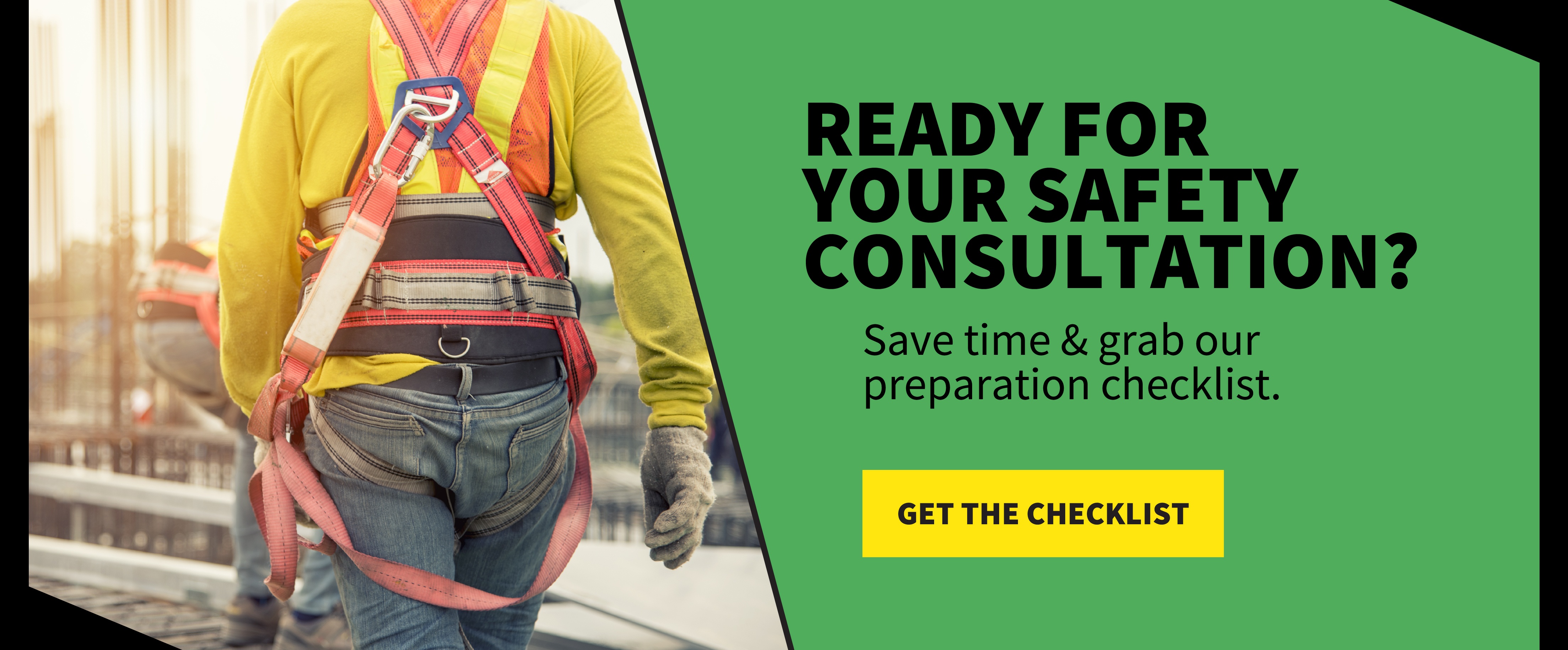
Trenching and excavation are crucial to the success of many construction projects, but there are a host of safety concerns that should be addressed before your team breaks ground.
Keeping yourself and your team compliant and safe means understanding everything from the process of excavation to OSHA’s standards and the variety of engineering strategies at your disposal.
We’ll start our discussion with some formal definitions, before jumping into the safety tips that you should know.
What is the difference between excavation and trenching?
Excavation, defined by OSHA, is any carved-out space that is formed by the removal of earth and dirt from the ground. Trenching is a kind of excavation. It is long and narrow, less than 15 feet in width, and it is deeper than it is wide.
Because both trenching and excavating deal with the removal of soil and the creation of a below-ground space, they can be hazardous activities. The greatest risk that excavators take on is cave-ins.
One cubic yard of soil can weigh as much as a car; to quote OSHA, “an unprotected trench can be an early grave.” Other hazards include falling loads, damaged underground utilities causing flooding, electric shock, gas leaks, and equipment dangers.
To prevent this, workers should only enter trenches after protections are put into place. Let's dive into some essential trenching and excavation safety tips that will keep you safe on the job.
Install protective systems
Not all trenches are created equal, and the same goes for protective systems. Designed to keep you safe from cave-ins and collapses, a protective system should be based on the specific needs of your site.
The kind of soil that you are digging in, the area’s weather, and nearby architecture and infrastructure should all be considered. At the minimum, a protective system must be in place if your trench is deeper than 5 feet. Past 20 feet, your protective system must have been designed by a professional engineer.
There are four main kinds of protective systems:
Sloping
Creating a slope by cutting back the trench wall at an angle is typically the most cost-effective option, but it is only possible if there is enough space around the excavation to get the required slope ratio. This ratio must be no steeper than 1.5 to 1.
Generally, the flatter the angle, the better. This evaluation and planning should be done by an OSHA-Certified Competent Person.
Benching
Benching is the process of creating steps (or long benches) that travel up and down the earth wall of the trench or excavation in a series of horizontal levels. Again, an OSHA-Certified Competent Person should be in charge of evaluating this option for your site.
This cannot be done in Type C soil, but can otherwise be done alone or in conjunction with sloping. Both sloping and benching are cost-effective because they do not require much additional support or infrastructure. However, for some sites, a deeper intervention is necessary.
Shoring
A support system made of timber, mechanical parts, or hydraulic systems can help prevent cave-ins by keeping the earth in place and providing an extra layer of protection against potential collapse. Shoring is the process of lining excavation walls with vertical sheeting and then keeping the sheeting in place using cross braces, also called shores.
There is a great variety of ways to accomplish this, including sheet pile, pneumatic shoring, hydraulic shoring, screw jack struts, timber shoring, lagging, and custom engineered systems. A professional engineer or OSHA-Certified Competent Person can ensure that you are using the most efficient and effective system for your needs. Shoring is fairly labor and time-intensive but can give greater peace of mind during extended digs.
Trench Shield
Trench shields, also called trench boxes, are an additional layer of protection that can keep workers safe in the event of a cave-in or collapse.
While trench shields don’t provide direct support to trench walls as shoring does, they shield the teams inside them from falling debris and outside issues. Trench shields are a great option for continuous trenching jobs, like laying pipe.
It is very important to follow the manufacturer's guidelines for trench shielding, as not all shielding can be stacked, and any movement or placement should be done carefully, with no one inside and with consideration for spacing.
Use alternative trenching methods
Trenching and excavating are innately dangerous, even when proper safety protocols are put into place. That's why the CDC recommends trying alternative ways of excavating. Here are some common methods to try:
Pipe Ramming
Also known as pipe jacking, pipe ramming is the practice of hammering pipe directly into the ground, as a way of bypassing the process of trenching. While it works as a substitute in many cases, pipe ramming is best for horizontal projects that make use of larger pipes.
Directional Boring
Using a boring machine, your team can dig at an angle and create a pilot hole that guides the placement of piping underground, which can help eliminate the danger to your crew that is present with trenching
Utility Tunneling
Similar to pipe ramming, utility tunneling can be done manually and does not disrupt above-ground traffic. Best for colder climates and larger industrial or commercial sites, the practice makes use of a borehole large enough for workers to enter, where linear plates are used to guide the path of your work. While the practice is quicker and easier than trenching, it does need routine follow-up maintenance to stay viable.
Here is our other related content to improve and avoid accidents when excavating:
Avoid Accidents with our Safety tips
Increasing Trench & Excavation Safety
Follow OSHA trenching and excavation safety practices
Because of its risk, OSHA has strict guidelines for trenching and excavation that your team should be aware of.
Never enter an unprotected trench, and make sure that any trench deeper than 5 feet has a protective system in place unless your work site is made of stable rock. Don't stand near any vehicle being loaded or unloaded, and don't place excavated soil within 2 feet of a trench edge.
Always wear PPE and conduct repeated safety inspections. Make sure that there is an OSHA-certified Competent Person available to address any existing issues and make recommendations for site safety and management.
Be aware of the excavation regulations and guidelines that your site should be following, as well as the protective systems that they are required to put into place. It's important that you know how to protect yourself when on-site and that safety begins with proper training.
A safety consultant can help ensure that you are up-to-date on the safety training that keeps you safe, aware, and OSHA compliant.


















